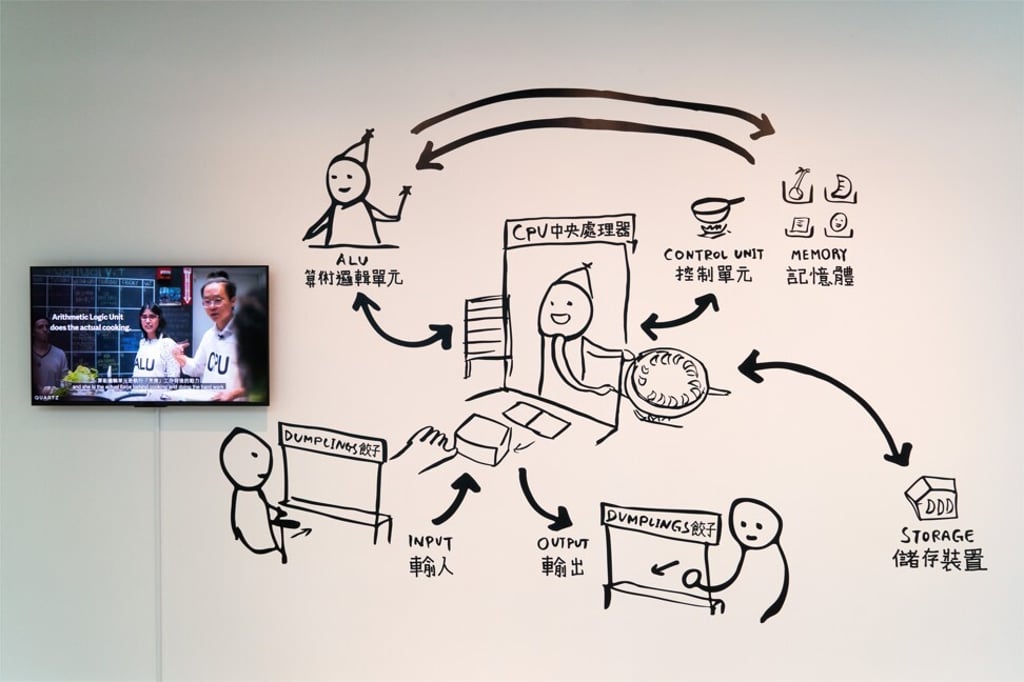The art at the heart of computer coding goes on show at Interweaving Poetic Code exhibition in Hong Kong
- Graphic artist Taeyoon Choi explores the relationship between computer coding and community in the exhibition
- He plays with themes such as humanising the internet, and compares coding with making dumplings

If you are one of those people (like me) who see coding as difficult and purged of any humanity, you might find yourself approaching “Interweaving Poetic Code”, the latest exhibition at the Centre for Heritage, Arts and Textile (Chat), with some trepidation.
Curated by artist Taeyoon Choi, the exhibition looks at how computer language can weave together textile art, graphics, fashion and interactive displays to explore notions of collaboration and production. At the heart of it is the idea that coding can be a model of care, the means for community support.
It is an ambitious venture. After all, we live in an era where centralised systems – be they governments, schools or technology – are likely to evoke anxieties around control and surveillance rather than being seen as symbols of compassion.
Two works at the start of the exhibition emphatically humanise the internet and the action of coding.

CPU Dumplings (2021), by Choi, elegantly translates the inner workings of a computer system into dumpling making, a palatable yet poetic symbolism. It is accompanied by a workshop on May 30 which promises to teach participants about the fundamentals of coding through the act of slicing vegetables and making dumplings.